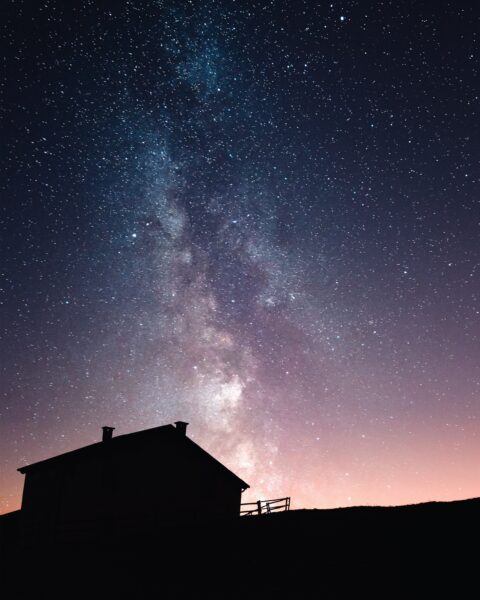Do you care about protecting the night sky? Join the International Dark Sky Association’s virtual conference this weekend.
The International Dark-sky Association is holding a conference this week to address probably the most underestimated source of pollution: artificial light.
It's not often appreciated that our reliance on artificial lighting can be devastating. Light pollution, the inappropriate and excessive use of artificial light, has not only erased thousands of stars from our night skies, it has messed up our circadian rhythm to the point of affecting our physical and mental health. Physical disorders, such as diabetes and even cancer, have been linked to excess artificial lighting, while mental disorders include sleeping difficulties and depression.
The International Dark-sky Assoiation identifies the main forms of light pollution as:
- Glare: excessive brightness
- Skyglow: brightening of the sky over towns and cities
- Light trespass: light falling where it’s not needed
- Clutter: bright and confusing groupings of light sources
Light pollution isn’t detrimental only to humans — it also has catastrophic consequences for wildlife and ecosystems. Migrating birds become disoriented by bright city lights and can collide with lit buildings. They can also fall from the sky from sheer exhaustion after flying around in endless circles, reluctant to leave the light source. Turtle hatchlings can’t find their way to the ocean, beguiled instead by bright city lights.

Open Source / Samuele Errico Piccarini
This is just a tiny fraction of the consequences of too much human-created light. A groundbreaking study published in 2016 reported that a whopping 80% of the world’s population lives under significant skyglow, and a jaw-dropping 99% of Americans and Europeans can’t readily enjoy the experience of a naturally dark night.
There are some things you can do to mitigate these effects, starting by asking yourself, for example, do you need to keep your front door light on all night long?
Even if the answer is “yes,” you can shield the bulb or choose one that gives off a warmer glow, rather than a glaring blue or white tone. Before you answer “yes,” though, consider this: Contrary to popular belief, having a bright light by your front door doesn’t improve safety or visibility — instead, glare from bright lights causes the pupils of your eyes to constrict when you step outside to check up on that rustle that you heard, preventing you from seeing properly.
But beyond our own personal choices, there are larger actions we can take to counter light pollution. The upcoming conference — free and open to the general public — will address these efforts.
Under One Sky

The International Dark-sky Association (IDA) was founded in 1988, the brainchild of professional astronomer David Crawford and amateur astronomer and physician Tim Hunter. The purpose of this nonprofit organization is to “protect the night from light pollution,” and it's currently the largest entity in the dark-sky movement.
The IDA regularly hosts an annual conference, bringing together its members and other interested parties. This year, the conference will focus on the environmental and cultural threat the light pollution poses to people who have been underrepresented in the work to protect the night from light pollution. It will be virtual and everybody is invited to attend.
Under One Sky is scheduled for November 13–14 and sessions will take place across 24 hours. Global opening and closing session will bracket three regional breakout sessions as follows (these are starting times):
- Global opening: Friday November 13th at 21:00 UT (4 p.m. EST; 1 p.m. PST)
- Oceania and Asia: Saturday November 14th at 2:00 UT (Friday November 13th 9 p.m. EST; 6 p.m. PST)
- Europe, Middle East, Africa, India: Saturday November 14th at 9:00 UT (4 a.m. EST; 1 a.m. PST on November 13th)
- North and South America: Saturday November 14th at 18:00 UT (1 p.m. EST; 10 a.m. PST)
- Global closing: Saturday November 14th at 21:00 UT (4 p.m. EST; 1 p.m. PST)
Participation is free, but advance registration is required. An exciting list of speakers is lined up hailing from all over the globe and from different walks of life, all driven by their mutual interest in light pollution and what we should be doing about it.
Annette Lee — astrophysicist, artist, and director of the Native Skywatchers research and programming initiative — will headline this event. Her keynote lecture will explore Indigenous Astronomy worldviews and how people from all cultures might benefit from this relationship with the night sky, reminding us of the critical importance of the star-filled celestial vault. Other speakers include astrophotographers, astronomers, conservationists, and musicians, to name but a few specialties represented.
You can also head to the event's Facebook page or follow the IDA on Twitter and Instagram.
If you care about the night sky and how it impacts wildlife, ecology, and climate change, among many other vital areas, this is an event not to be missed.

International Dark Sky Association
 1
1









Comments
Robert-Casey
November 12, 2020 at 4:59 pm
I'm 14 miles from New York City, and I can't see anything fainter than 1st magnitude. 🙁
You must be logged in to post a comment.
You must be logged in to post a comment.